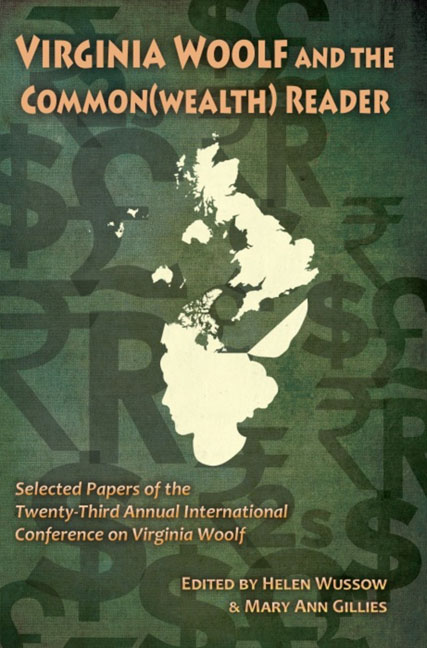Book contents
- Frontmatter
- Contents
- Introduction to Virginia Woolf and the Common(wealth) Reader
- Acknowledgments
- List of Abbreviations
- Invocations
- Networks of Affiliation: Foundations and Friends
- Woolf and the Commonwealth
- 1930s Onwards
- Woolf Beyond the Book
- Preserving Our History of Reading Woolf: The Common Wealth of Our Past and Future
- Adventures in Common: Investing with Woolfs and ”Securitas”
- Printing “Prelude”: Virginia Woolf's Typsetting Apprenticeship and Katherine Mansfield on “Other People's Presses”
- The Hogarth Press, Digital Humanities, and Collaboration: Introducing the Modernist Archives Publishing Project (MAPP)
- Woolf Blogging, Blogging Woolf: Using the Web to Create a Common Wealth of Global Scholars-Readers
- Notes on Contributors
- Conference Program
Printing “Prelude”: Virginia Woolf's Typsetting Apprenticeship and Katherine Mansfield on “Other People's Presses”
from Woolf Beyond the Book
- Frontmatter
- Contents
- Introduction to Virginia Woolf and the Common(wealth) Reader
- Acknowledgments
- List of Abbreviations
- Invocations
- Networks of Affiliation: Foundations and Friends
- Woolf and the Commonwealth
- 1930s Onwards
- Woolf Beyond the Book
- Preserving Our History of Reading Woolf: The Common Wealth of Our Past and Future
- Adventures in Common: Investing with Woolfs and ”Securitas”
- Printing “Prelude”: Virginia Woolf's Typsetting Apprenticeship and Katherine Mansfield on “Other People's Presses”
- The Hogarth Press, Digital Humanities, and Collaboration: Introducing the Modernist Archives Publishing Project (MAPP)
- Woolf Blogging, Blogging Woolf: Using the Web to Create a Common Wealth of Global Scholars-Readers
- Notes on Contributors
- Conference Program
Summary
During the past academic year—my sabbatical—I began an apprenticeship of sorts, taking courses in letterpress printing and bookbinding at the University of Iowa Center for the Book, a course of study that made me curious about Virginia Woolf's own initiation into print culture in the years 1915-1920. Before my handson introduction to letterpress, I thought studies of the Hogarth Press valuable because of the authors, the publications, and the opportunities for literary networking the press provided. Now, rather, I find myself fascinated by questions about the power dynamics of a private press, choices of typeface and typesetting options—and the whole conceptual play of type and composing. The initiation into the perils and pleasures of letterpress led me to devour accounts of Leonard and Virginia's chutzpah taking on a press of their own—and to regale myself with their tales of glee and catastrophe. At times I laughed with fresh insight; reading a 1918 diary entry about Lottie's misadventures spilling type, I groaned with recognition and commiseration:
On Wednesday [24 April] Lottie spilt half a case of type on the floor, so that I had to spend 4 hours in sorting every compartment—about the most trying work there is. She had mixed the letters in thoroughly, thinking or hoping that though divided in compartments the letters were all the same.
On Thursday I was recumbent & L. went to do proofs at the office (D1 143-4).Such press stories drew me to one of Woolf's earliest encounters with printing, one which she initiated and for which she did a good deal of typesetting: Katherine Mansfield's “Prelude.” That encounter affected both writers and led to yet another small press, the Heron Press, as we shall see.
Hogarth Press and Heron Press: Stories and Studies
The amateur little press and periodical scene of the first two decades of the twentieth century was enthusiastic, seductive and—for the most part—ephemeral. Into this vibrant mélange entered Virginia Woolf and Katherine Mansfield, along with their partners, Leonard Woolf and John Middleton Murry.
- Type
- Chapter
- Information
- Virginia Woolf and the Common(wealth) Reader , pp. 212 - 222Publisher: Liverpool University PressPrint publication year: 2014



